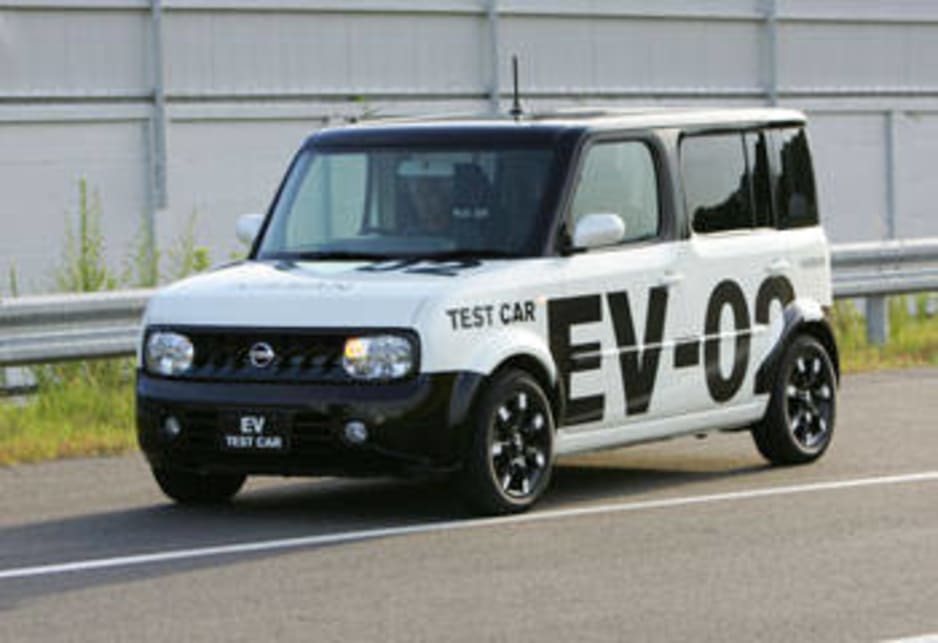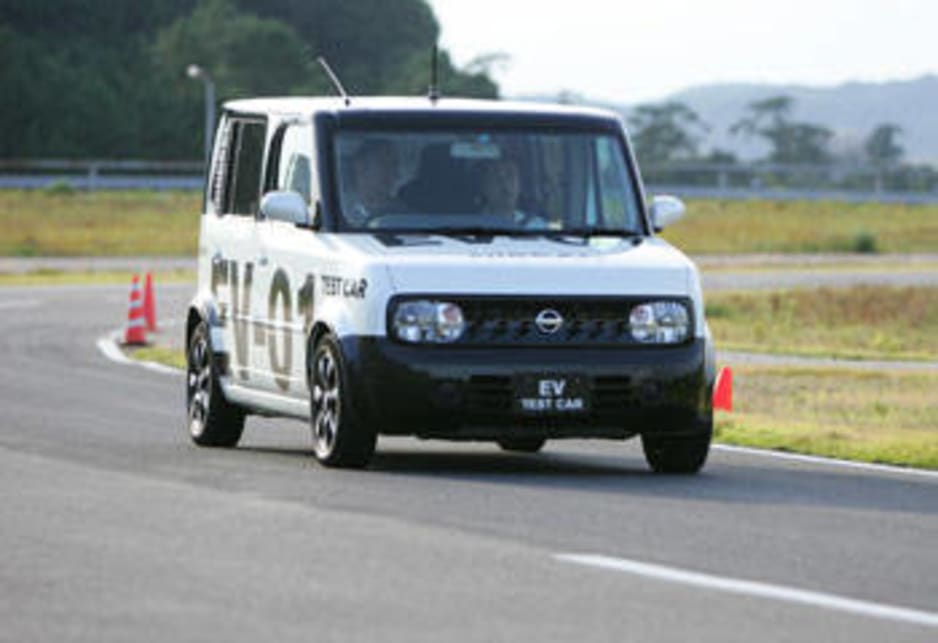
First drive Nissan Cube EV
- Nissan Cube
- Nissan CUBE 2005
- Nissan Cube Reviews
- Nissan Reviews
- Nissan Hatchback Range
- Hatchback
- Nissan
Cutting-edge lithium-ion batteries are at the heart of two Nissans due on sale globally by 2012.
The new batteries are lighter and more powerful and have a better range than conventional nickel metal hydride batteries such as those used in the Toyota Prius.
Nissan is well advanced with development, showing off all-electric and hybrid-electric prototypes in Japan that use the batteries.
It plans to introduce the all-electric car in Japan by 2010, followed by the rest of the world.
The prototype EV car, based on a Cube hatch called the EV-02, is expected to be sold in Australia.
The production car is said to closely resemble the two-door Mixim coupe but will be made more family friendly, with a bigger load area and more rear room.
In prototype form, the Cube EV-02 has a range of 160km, but once the production car hits the road Nissan believes it will be able travel 250km before recharging and have a top of 180km/h.
Even with a range of 160km, the EV-02 can complete an average commute with distance left in reserve.
The car can be charged from a conventional power point overnight.
Nissan also plans a fast-charging system that will boost power to 80 per cent in 10-20 minutes.
It plans to talk to governments and electricity companies about the recharging infrastructure needed.
The EV prototype is part of Nissan's research and development program on zero-emission vehicles.
This latest-generation front-wheel-drive prototype uses a newly developed 80kW motor and inverter.
Nissan, in conjunction with NEC, has produced compact flat, or laminate, batteries, rather than the conventional, cylindrical cells of other electric vehicles.
The advanced laminated lithium-ion batteries are installed under the floor, without sacrificing either cabin or cargo space.
Like the EV, the petrol-electric hybrid sedan introduces breakthrough technologies that will be shared with Renault, which is owned by Nissan.
The petrol hybrid is based on the rear-drive Infiniti G35 V6.
The car uses a Nissan-developed high-performance rear-wheel-drive hybrid system and parallel-powertrain hybrid system.
The parallel-powertrain system comprises an energy-saving system with two clutches, meaning one motor is directly connected to the V6 and auto transmission via separate clutches.
The motor switches between the two to optimise and conserve energy and improve fuel efficiency.
The parallel-powertrain hybrid system eliminates the need for conventional torque converters, contributing to higher responsiveness and acceleration, for improved driving feel.
The batteries used in both prototypes are sourced from a joint venture operation between Nissan and NEC, called the Automotive Energy Supply Corporation.
The batteries have superior performance, reliability, safety, versatility and cost competitiveness compared with conventional nickel metal hydride batteries, Nissan spokesman Haruyoshi Kumura says.
“Its compact, flat laminated configuration has twice the electric power compared with conventional nickel metal hydride batteries with a cylindrical configuration,” he says.
The compact batteries also allow for improved vehicle packaging.
“It is far more space efficient and compact,” Kumura says.
He says recycling the EV-02 and the hybrid are paramount.
“Nissan is looking at the whole concept of electric-vehicle recycling of the car, not only the batteries.”
Nissan electric cars are not new.
It built the Tama electric car in 1947, driven by post-World War II fuel shortages.
In today's world, the big question with the EV is price.
It is expected to cost more than a conventional small four-cylinder hatch and the petrol electric hybrid will be more expensive than a mid-size petrol Nissan.
DRIVING
IN PRACTICE, the Cube EV is just like a conventional car, except for the prototype's funky black-and-white paint scheme.
Like a conventional small four-cylinder vehicle, the start-up procedure is similar.
But in the case of the EV, the driver just turns a key until a green “ready” light comes on. Drive is then selected and the Cube EV powers away in silence.
There is minimum noise from the electric motor, and the torque is instantaneous from standstill.
The prototype had no trouble quickly hitting 100km/h on the tight Nissan test track near Yokohama and acceleration was impressive.
Equally impressive is the sophistication of the drivetrain and the “normal” behaviour of the car, even though it is a prototype.
The handling is as good as a conventional hatch.
Only the prototype's battery packaging under the front seats and rear floor intrude into the cabin.
Kumura says that by the time the production version rolls out of the factory, it will have good packaging and plenty of room for passengers and luggage.








